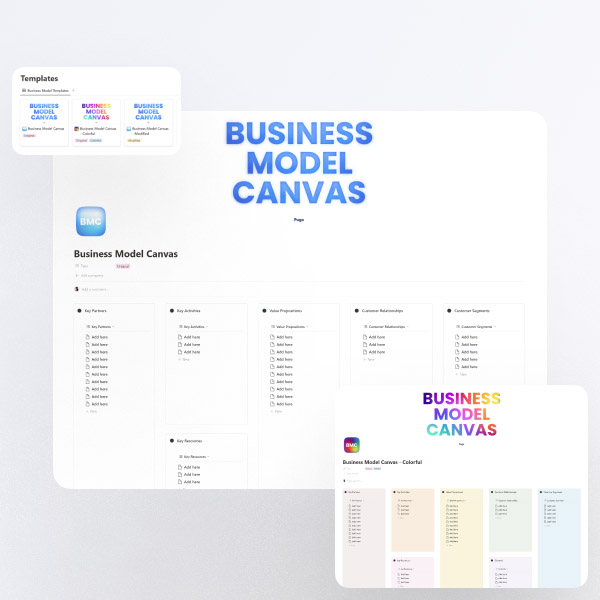Business Planning for Startups – How to Write a Startup Business Plan
Business Planning for Startups
Starting a new business is an exciting and challenging venture, filled with promise and potential. However, it’s vital to recognize that the road to entrepreneurial success is often navigated through the quality of your business plan. In this comprehensive guide, we will serve as your compass, leading you through the essential steps, strategies, and tips required to craft a business plan that not only charts your startup’s course but also paves the way for its triumphant journey.

The Cornerstone of Your Startup
The Vital Role of a Business Plan
Every great endeavor begins with a vision, but it’s a well-structured business plan that turns that vision into a reality. This section delves into the fundamental role played by a business plan as the anchor and roadmap of your startup’s journey. As we explore this cornerstone of success, you’ll come to understand that a thoughtfully crafted business plan is more than a mere document; it’s a dynamic tool that propels your startup towards its goals. This is where we embark on our exploration of the intricate world of business planning, setting the stage for your entrepreneurial aspirations.
Setting the Stage: Laying the Foundation
Before you embark on your entrepreneurial journey, it’s essential to establish a solid foundation for your startup. This involves shaping your business idea and conducting thorough market research and analysis to ensure your concept aligns with market trends and customer needs. In this section, we’ll explore the critical steps in defining your business idea and the significance of market research.
Defining Your Business Idea
The Inception of Innovation: Every successful business begins with an innovative idea. Whether you aim to solve a problem, fulfill a need, or offer a unique product or service, innovation is at the heart of entrepreneurship. This section will guide you through the process of fostering creativity and generating innovative concepts that form the core of your startup.
- Encouraging Creativity: We’ll discuss techniques and practices to stimulate your creativity and inspire fresh ideas. Creativity is a skill that can be nurtured, and we’ll provide insights into how to unlock your creative potential.
- Problem Solving: The most successful businesses often begin by addressing a specific problem or challenge. We’ll explore the art of problem-solving and how identifying issues in your community, industry, or daily life can lead to innovative solutions.
Researching Market Gaps: While a brilliant business idea is essential, its success relies on its alignment with the market. In this part, we’ll guide you through the process of identifying market gaps and emerging trends. This research is instrumental in creating a unique concept that resonates with your target audience.
- Market Gap Identification: We’ll explore methods to identify gaps or unmet needs within your chosen market. This critical step ensures that your business idea addresses a specific demand, increasing your chances of success.
- Embracing Emerging Trends: Markets are dynamic, and staying ahead of trends can set your business apart. We’ll discuss strategies for tracking emerging trends and adapting your business idea to remain relevant and appealing.
10+ Business Planning Templates Every Founder Needs
Market Research and Analysis
Understanding Your Target Audience: At the core of every successful business is a deep understanding of its target audience. In this part, we’ll highlight the importance of market segmentation and comprehending consumer behaviors to ensure your products or services precisely meet your audience’s needs.
- Market Segmentation: We’ll delve into the concept of market segmentation, a process that involves dividing your target market into distinct groups based on characteristics such as demographics, psychographics, and behavior. By understanding the unique needs and preferences of each segment, you can tailor your business offerings more effectively.
- Consumer Behavior Analysis: Successful businesses are built on an intimate knowledge of consumer behavior. We’ll explore the psychological and behavioral factors that influence purchasing decisions, allowing you to craft marketing strategies that resonate with your audience.
- Persona Development: Creating customer personas is a valuable tool for empathizing with your target audience. We’ll guide you through the process of developing detailed customer personas, enabling you to understand their goals, pain points, and motivations.
Competition Analysis: While competitors may seem like adversaries, they are, in fact, valuable sources of insight. In this section, we’ll dive into the art of competitive analysis, helping you understand your competitors’ strengths, weaknesses, and strategies. This knowledge becomes the foundation upon which you’ll build your business strategy, differentiating your startup in the marketplace.
- Competitive Landscape: We’ll guide you through the process of mapping out your competitive landscape. This involves identifying existing and potential competitors, understanding their market share, and evaluating their offerings.
- SWOT Analysis: Utilizing the SWOT (Strengths, Weaknesses, Opportunities, Threats) framework, we’ll help you assess your competitors and your own startup. This analysis provides valuable insights into how you can position your business advantageously.
- Differentiation Strategies: To thrive in a competitive market, you’ll need a strategy that sets you apart. We’ll explore various differentiation strategies, from pricing and product features to branding and customer service.
Establishing a robust foundation through innovative business ideas and comprehensive market research is the first step toward building a successful startup. By crafting a unique concept and understanding your target audience and competition, you’ll be well-prepared to move forward in your entrepreneurial journey. In the following sections, we’ll continue to expand upon these foundational elements to guide you toward business planning and execution.
The Blueprint: Crafting Your Business Plan
Now that you’ve set the stage for your startup and defined its core elements, it’s time to construct the blueprint that will guide your venture towards success. In this section, we’ll delve into the critical components of your business plan, which will transform your innovative ideas into a clear and actionable roadmap.
Executive Summary
The Power of Conciseness: The executive summary serves as the gateway to your entire business plan. It’s the first impression potential investors and stakeholders will have of your startup. In this part, we’ll explore the art of crafting a compelling executive summary that encapsulates the essence of your business.
- Essential Elements: We’ll discuss the key elements that must be included in your executive summary, such as your business concept, unique selling proposition, target market, and financial highlights.
- Hooking Your Audience: The executive summary is your chance to grab your readers’ attention immediately. We’ll provide tips on how to create a captivating opening that keeps your audience engaged.
- Clarity and Conciseness: Achieving a balance between providing sufficient information and being concise is crucial. We’ll offer guidance on presenting a clear and compelling summary without overwhelming your readers.
Last But Not Least: It may come as a surprise, but the executive summary is often written last. We’ll explain the logic behind this strategy, which involves creating a more concise and impactful summary after all the other sections of your business plan are finalized.
- A Summary of the Summary: We’ll discuss why writing the executive summary last allows you to extract the most critical details from the completed plan, ensuring that it accurately reflects your business concept and goals.
- Cohesion and Consistency: With all other sections in place, writing the executive summary last allows you to ensure that the content aligns seamlessly with the rest of your business plan.
Business Description
Beyond the Basics: Moving beyond the mere naming of your business, the business description section involves articulating your startup’s mission, vision, and unique selling proposition (USP). We’ll guide you through the process of defining your brand, its core values, and what sets you apart from the competition.
- Defining Your Mission: We’ll explore the significance of a well-defined mission statement and how it encapsulates the purpose and direction of your business.
- Crafting a Vision: Your vision statement outlines the long-term goals and aspirations of your startup. We’ll provide insights into creating a compelling and motivating vision.
- Unique Selling Proposition (USP): Your USP is what distinguishes your business from the competition. We’ll discuss strategies for identifying and emphasizing your USP, as well as the role it plays in attracting customers.
Market Strategy
1. A Roadmap for Success: To enter the market successfully and attract customers, you need a well-thought-out market strategy. We’ll discuss various market entry strategies, from market segmentation to differentiation, to help you choose the path that best suits your startup.
- Market Segmentation: Understanding your target market’s unique segments is essential. We’ll explore the concept of market segmentation and how it enables you to tailor your products or services to different customer groups effectively.
- Differentiation Strategies: In a competitive landscape, differentiation is key. We’ll delve into differentiation strategies that set you apart from competitors, whether through pricing, product features, branding, or other aspects.
2. Creating Your Brand Presence: In today’s digital age, establishing a brand presence is crucial to attracting and retaining customers. We’ll explore different marketing and advertising strategies and channels that can help you connect with your target audience effectively.
- Digital Marketing:* An online presence is vital in today’s business environment. We’ll discuss strategies for utilizing digital marketing, including content marketing, social media, and email campaigns.
- Traditional Marketing:* While digital marketing is essential, traditional marketing methods can still be valuable. We’ll provide insights into incorporating traditional marketing channels, such as print media and events, into your strategy.
- Building Brand Loyalty:* Fostering brand loyalty is the ultimate goal. We’ll share tips on building trust, creating engaging brand experiences, and retaining customers in a competitive market.
Operational Details
Behind the Scenes: The operations of your business, often unseen by customers, form the backbone of your startup. In this section, we’ll outline the logistics of running your business, from managing supplier relationships to production and distribution strategies.
- Supplier Management: Developing strong relationships with suppliers is essential for a smooth supply chain. We’ll discuss best practices for supplier selection, negotiation, and collaboration.
- Production Process: We’ll guide you through the production process, whether you’re manufacturing products or providing services. Efficiency and quality are key factors in your business’s success.
- Distribution Strategies: The way you distribute your products or services can significantly impact your operations. We’ll explore various distribution strategies, from direct sales to third-party retailers.
Financial Projections
1. Securing the Future
The financial projections section of your business plan serves multiple purposes. It not only showcases your profit potential to potential investors but also acts as a critical internal tool for ensuring your business’s sustainability. We’ll delve into the process of creating detailed financial forecasts and emphasize why this section is crucial for securing funding.
- Revenue Projections: We’ll guide you through estimating your startup’s revenue projections. This includes forecasting sales, pricing strategies, and understanding your market’s size.
- Expenses and Budgeting: Keeping a close eye on your expenses is essential for financial stability. We’ll discuss strategies for effective budgeting and cost management.
- Cash Flow Management: Effective cash flow management ensures your startup’s day-to-day operations run smoothly. We’ll explore methods for maintaining healthy cash flow.
- Securing Funding: For startups, securing funding is often a vital step. We’ll outline different funding sources, from bootstrapping and loans to seeking investment from angel investors or venture capitalists.
By the end of this section, you’ll have a well-crafted business plan that acts as a formidable tool for your startup’s journey. It combines vision with practicality and fosters a clear path towards success. The blueprint you create serves as a detailed roadmap, guiding your startup through its early stages and beyond. In the following sections, we’ll continue to build upon this foundation, focusing on goals, legal considerations, team building, and funding strategies.
The Heart of Your Business Plan: Defining Your Goals
While your business plan is a comprehensive document that addresses various aspects of your startup, its true essence lies in its ability to set and pursue objectives that will steer your venture towards success. In this section, we delve into the heart of your business plan – defining your goals.
Setting Realistic Goals
1. The Necessity of Achievable Goals
The journey of entrepreneurship is fueled by ambition, but it’s guided by setting realistic short-term and long-term goals. We’ll begin by emphasizing the critical importance of balancing your dreams and ambitions with the pragmatism of setting achievable goals.
- Ambition Meets Pragmatism: Setting the right goals involves striking a balance between your ambitious vision for your startup and the practical realities of the business world.
- Aim High, But Be Grounded: We’ll guide you in setting goals that challenge your limits while remaining attainable, ensuring you don’t become discouraged or overwhelmed.
2. The SMART Approach
To structure your goals effectively, we introduce the SMART criteria – Specific, Measurable, Achievable, Relevant, and Time-bound. We’ll guide you on how to apply this framework to your goals, ensuring they are well-defined, quantifiable, attainable, pertinent, and time-sensitive.
- Specific Goals: Your goals need to be precise and unambiguous, leaving no room for interpretation. We’ll discuss the importance of clear and specific objectives.
- Measurable Outcomes: Measuring your progress is key to understanding whether you’re on track. We’ll delve into creating goals that you can quantify.
- Achievability Matters: We’ll explore how achievable goals maintain motivation and momentum by ensuring you don’t set the bar impossibly high.
- Relevance to Your Vision: Every goal should serve a purpose and align with your long-term vision. We’ll discuss how to set goals that are directly relevant to your business objectives.
- Time-bound Objectives: Deadlines are essential for accountability. We’ll guide you on establishing time-bound goals that create a sense of urgency.
Financial Objectives
1. The North Star of Revenue
At the core of any business venture are financial objectives, primarily focused on revenue targets and growth metrics. We’ll discuss the methodologies for determining the right financial objectives and how they play a pivotal role in your business’s progress.
- Revenue Targets: Setting revenue targets is an essential part of your financial objectives. We’ll guide you on how to estimate your startup’s revenue expectations based on your business model.
- Growth Metrics: Growth isn’t just about making money; it’s also about scaling and expanding your business. We’ll explore various metrics for measuring growth, such as customer acquisition, market share, and profitability.
2. Allocating Your Resources
Accomplishing your financial objectives isn’t just about setting targets; it’s also about wisely distributing your resources. We’ll dive into the strategies for allocating funds across various aspects of your business to ensure the growth you aim for is well-supported.
- Budget Allocation: Wise allocation of financial resources involves creating a detailed budget that covers all your business activities. We’ll discuss strategies for effective budgeting, managing your costs, and ensuring a positive financial outlook.
- Investing in Growth: Part of financial objectives is understanding how much to reinvest in your business. We’ll explore the concept of reinvestment and how it’s critical for sustained growth.
By the time you complete this section, the core of your business plan will be filled with realistic, SMART goals, and well-defined financial objectives. Your business plan won’t just be a document; it will be a dynamic instrument for steering your startup towards its desired future. These goals and financial objectives will guide your every decision, ensuring that your startup stays on the path to success. In the following sections, we’ll continue to build upon this foundation, focusing on legal considerations, team building, and funding strategies.
Legal Considerations: Navigating Regulations and Compliance
In the world of entrepreneurship, success is intricately intertwined with legal compliance. This section serves as your guiding light through the labyrinth of legal considerations that every startup must navigate.
Business Structure
- The Foundation of Your Enterprise:
- Sole Proprietorships: We’ll start by examining the simplest form of business structure, sole proprietorships. These are businesses owned and operated by a single individual. We’ll explore the advantages and disadvantages of this structure, helping you decide if it’s the right fit for your startup.
- Partnerships: Partnerships are a common choice for businesses with multiple owners. We’ll delve into the different types of partnerships, such as general partnerships, limited partnerships, and limited liability partnerships. Understanding these structures will be crucial in making informed decisions regarding your startup’s legal foundation.
- Limited Liability Companies (LLCs): LLCs offer a balance between personal liability protection and flexibility. We’ll discuss the benefits of structuring your business as an LLC, along with any potential drawbacks.
- Corporations: Corporations, including C Corporations and S Corporations, provide strong liability protection but come with complex regulations. We’ll help you weigh the pros and cons of this business structure, guiding you in determining if it aligns with your business goals and vision.
- Tax Implications:
- Sole Proprietorship Taxes: Understanding the tax implications of sole proprietorships is vital for entrepreneurs starting small businesses. We’ll explore the tax responsibilities and benefits associated with this structure.
- Partnership Taxes: For businesses with multiple owners, partnerships have specific tax implications. We’ll guide you through partnership taxation and discuss pass-through taxation, which is a key aspect of partnerships.
- LLC Taxation: The taxation of LLCs can be intricate. We’ll discuss how LLCs can choose their tax treatment, whether as a disregarded entity, partnership, or corporation. Understanding these options is essential in managing your tax obligations.
- Corporation Taxes: Corporations have a unique tax structure, including double taxation of profits. We’ll explore the intricacies of corporate taxation, helping you make informed decisions about this business structure.
Permits and Licenses
- Legal Obligations:
- Industry-Specific Requirements: Most industries have specific permits and licenses that businesses must obtain to operate legally. We’ll guide you through the process of identifying the necessary permits and licenses for your field, ensuring you’re fully aware of your legal obligations.
- Local, State, and Federal Considerations: The permits and licenses you require may vary depending on your business’s location and the industry it operates in. We’ll help you understand the differences between local, state, and federal requirements.
- Professional and Trade Licenses: Certain professions and trades necessitate specialized licenses. We’ll explore the categories of professional and trade licenses, providing insights into what might be required for your startup.
- Navigating the Process:
- Challenges and Complexities: Obtaining permits and licenses can be a daunting task due to its often intricate and bureaucratic nature. We’ll provide insights and strategies to help you navigate this process smoothly, ensuring that your business operates without any legal hitches.
- Common Pitfalls to Avoid: Many entrepreneurs encounter challenges and pitfalls when dealing with permits and licenses. We’ll highlight common mistakes to avoid, simplifying the process and saving you time and resources.
By the time you complete this section, you’ll have a comprehensive understanding of the legal foundations of your startup. You’ll know which business structure suits your venture, how to handle taxes, and how to secure the necessary permits and licenses. This knowledge will not only keep you compliant but also provide a stable legal framework for your business to thrive. Legal compliance is a critical aspect of ensuring your startup’s success and protecting your investments.
Funding Your Startup: Strategies and Options
Turning your startup vision into reality often requires a financial catalyst. In this section, we’ll explore various funding strategies and options to fuel your business.
Bootstrapping
The Power of Self-Reliance:
- What is Bootstrapping: Bootstrapping is the art of building your business with minimal external funding. We’ll delve into this concept and its advantages, including maintaining full control and independence over your startup.
- Advantages of Bootstrapping: We’ll explore the benefits of bootstrapping, which include maintaining equity, staying true to your vision, and avoiding the complexities and obligations of external investors.
Strategies for Thriving on Limited Resources:
- Running a Lean Startup: We’ll provide a comprehensive guide to budgeting, cost-cutting, and efficient resource allocation. This approach ensures you can thrive without hefty investments.
- Effective Resource Allocation: Learn how to make the most of limited resources, allocate funds wisely, and prioritize expenditures to achieve growth and profitability.
Building a Viable Product:
- Importance of a Minimum Viable Product (MVP): One of the essential strategies in bootstrapping is creating an MVP. We’ll explain how to develop an MVP that meets market needs while conserving resources.
- Customer-Centric MVP Development: Explore the process of identifying customer pain points, building a solution, and validating it in the market. This customer-centric approach ensures that your MVP resonates with your target audience.
Seeking Investment
1. Exploring Different Investment Sources:
- Angel Investors: We’ll explore the world of angel investors, individuals who provide capital to startups in exchange for equity. Learn how to find and pitch to angel investors effectively.
- Venture Capital: Venture capital firms invest in high-potential startups. We’ll discuss the advantages and disadvantages of seeking venture capital, along with tips for attracting VC funding.
- Crowdfunding: Crowdfunding platforms allow you to raise funds from a broad audience. We’ll explore various types of crowdfunding, including rewards-based and equity crowdfunding, and provide insights into launching successful crowdfunding campaigns.
- Loans and Debt Financing: Explore the option of taking out loans or seeking debt financing to fund your startup. We’ll discuss the various types of loans available and the considerations involved.
2. Preparing a Compelling Pitch:
- The Importance of a Pitch Deck: To secure external investment, you need a compelling pitch that not only explains your business but also convinces potential investors of its viability. We’ll provide insights into crafting a persuasive pitch deck, including essential components and tips on how to present it effectively.
- Pitching to Investors: We’ll guide you through the process of presenting your pitch to potential investors. This includes in-person presentations, virtual pitches, and the art of addressing investor concerns and objections.
By the end of this section, you’ll have a comprehensive understanding of funding your startup, whether it’s through bootstrapping, external investments, or a combination of both. You’ll be equipped with the knowledge to make informed decisions on the financial strategies that best suit your startup’s needs and aspirations. The path to securing the necessary funds to turn your startup dream into a reality will be more accessible and well-informed.
Implementation and Execution: Bringing Your Plan to Life
The business plan you’ve meticulously crafted is the roadmap for your startup’s journey. In this section, we’ll guide you through the critical steps of bringing that plan to life, from the initial launch to continuous measurement and adaptation.
The Launch Phase
1. Step-by-Step Launch Guide:
Launching your startup is a pivotal moment. We’ll provide a detailed, step-by-step guide to help you navigate this phase successfully. From finalizing product development to setting up your online and physical presence, you’ll have a clear roadmap to follow.
2. Creating Buzz and Awareness:
Building anticipation and awareness is essential to a successful launch. We’ll explore various marketing and promotional strategies to generate buzz around your business. This includes online and offline tactics, as well as leveraging social media, content marketing, and email campaigns.
- Leveraging Social Media: Social media platforms are powerful tools for creating pre-launch excitement. We’ll provide strategies for building a social media presence and engaging your audience before your startup’s official launch.
- Content Marketing: Quality content is an effective way to showcase your expertise, build credibility, and attract an audience. We’ll discuss content marketing strategies that can be employed in the lead-up to your launch.
- Email Campaigns: Email marketing can be a key component of your pre-launch strategy. We’ll explore how to build an email list, create compelling pre-launch campaigns, and convert subscribers into customers.
3. Setting the Right Tone:
Crafting a memorable brand identity from day one is vital. We’ll discuss the significance of setting the right tone for your business, aligning your brand identity with your target audience, and making a strong first impression.
- Brand Identity Consistency: Consistency in your brand identity is crucial. We’ll provide tips on maintaining a uniform brand image across various touchpoints, from your website to social media and offline marketing materials.
Measuring and Adapting
1. The Power of Metrics:
Measuring your startup’s performance is an ongoing process. We’ll delve into key performance indicators (KPIs) that matter most, such as customer acquisition cost, customer lifetime value, and conversion rates. Understanding these metrics is crucial for making informed decisions.
- Customer Acquisition Cost (CAC): We’ll explain the importance of CAC and how it relates to your marketing budget. You’ll learn how to calculate it and strategies to optimize it.
- Customer Lifetime Value (CLV): CLV is a vital metric for assessing the long-term value of your customers. We’ll discuss its significance and strategies to increase it over time.
- Conversion Rates: Explore the different types of conversion rates, from website conversion to email sign-up rates. Learn how to analyze them and implement improvements.
2. Continuous Analysis:
Successful startups continuously analyze their data to assess what’s working and what needs improvement. We’ll discuss the importance of constant analysis and how it leads to more informed business decisions.
- A/B Testing: A/B testing allows you to experiment with different variations of your website, emails, or marketing campaigns to determine what resonates best with your audience. We’ll provide insights into conducting effective A/B tests and interpreting the results.
- User Analytics: Dive into user analytics tools to gain a deeper understanding of your customers. Learn how to interpret data from tools like Google Analytics to make data-driven decisions.
3. Adaptation Strategies:
To thrive, your startup must be adaptable. We’ll provide insights into making necessary adjustments to your business plan, marketing strategy, and overall operations. By understanding when and how to pivot, you can stay on the path to success.
- Pivoting: Explore the concept of pivoting in startups. We’ll discuss the signs that indicate when a pivot is necessary, the different types of pivots, and strategies for executing a successful pivot.
- Scaling: When your startup experiences growth, it’s essential to scale your operations. We’ll discuss strategies for scaling your business, including hiring, expanding product lines, and entering new markets.
By the end of this section, you’ll be well-prepared to transition from planning to action. We’ll equip you with the knowledge and strategies to execute your business plan effectively, ensuring a smooth launch and the ability to measure, analyze, and adapt as your startup grows. You’ll have the tools to create buzz, engage your audience, and make data-driven decisions that contribute to the success of your startup.
Risk Management: Preparing for the Unexpected
In the world of startups and entrepreneurship, preparing for the unexpected is not just prudent; it’s a critical survival skill. This section will dive deep into understanding, assessing, and managing risks associated with your startup.
Identifying and Assessing Risks
1. A Risk-Aware Startup:
The first step in managing risks is to recognize them. We will guide you in developing a risk-aware mindset to identify potential threats, challenges, and vulnerabilities within your business model.
- Risk Awareness Culture: Creating a culture of risk awareness among your team is crucial. We’ll discuss strategies for instilling this culture, which encourages every team member to contribute to risk identification.
2. Risk Assessment Techniques:
Understanding the nature of these risks and their potential impact is essential. We’ll explore various risk assessment techniques and tools to help you measure and prioritize different risks.
- SWOT Analysis: SWOT (Strengths, Weaknesses, Opportunities, Threats) analysis is a fundamental tool for assessing risks. We’ll delve into how to conduct a SWOT analysis effectively and interpret the results.
- Risk Matrix: A risk matrix is a visual tool to evaluate and prioritize risks based on their likelihood and impact. We’ll guide you through creating and using a risk matrix to make informed decisions.
3. Mitigation Strategies:
Identifying risks is only part of the equation. Developing strategies to mitigate those risks is equally crucial. We will provide insights into devising and implementing risk mitigation tactics.
- Risk Mitigation Plans: We’ll discuss the process of creating comprehensive risk mitigation plans, which outline the specific steps to reduce or eliminate potential risks.
4. Cybersecurity Risks:
In the digital age, cybersecurity is a paramount concern. We will discuss the potential cybersecurity risks your startup might face, from data breaches to online threats, and strategies to protect your business.
- Data Protection: Safeguarding your customers’ data is vital. We’ll explore data protection measures, encryption, and best practices for maintaining cybersecurity.
- Training and Awareness: Human error is a common factor in cybersecurity breaches. We’ll discuss the importance of training your team and creating a culture of cybersecurity awareness.
- Incident Response Plan: In the event of a cybersecurity breach, you need an incident response plan. We’ll guide you through creating a robust plan to minimize damage and recover quickly.
Contingency Planning
The Importance of Contingency Plans:
Contingency planning involves preparing for the worst-case scenarios. We will explain why having a contingency plan is vital and how it can be a lifesaver in a crisis.
- Reducing Uncertainty: Contingency plans reduce uncertainty by providing a structured response to unforeseen events. They can mean the difference between business survival and failure.
Crisis Management Strategies:
Effective crisis management is a skill all successful entrepreneurs possess. We will delve into the principles of crisis management, including assembling a crisis response team, communication strategies, and damage control.
- Crisis Response Team: Building a team capable of handling crises is essential. We’ll discuss how to select team members, delegate responsibilities, and establish clear lines of communication.
- Communication Strategies: Crisis communication can make or break your reputation. We’ll provide insights into crafting effective crisis messages and maintaining transparency with stakeholders.
- Damage Control: When a crisis occurs, damage control is essential. We’ll explore strategies for minimizing the impact of the crisis on your business and customers.
Creating Backup Plans:
- We’ll provide actionable advice on creating backup plans for various types of crises, from financial setbacks to natural disasters. You’ll learn how to develop clear, structured, and effective plans that can be put into action when needed.
- Financial Backups: Explore strategies for building financial reserves that can help your business weather economic downturns and unexpected financial challenges.
- Disaster Recovery Plans: Natural disasters can be devastating. We’ll discuss disaster recovery plans, which are essential for maintaining business continuity in the face of unforeseen events.
By the end of this section, you will be well-versed in identifying, assessing, and managing risks in your startup. You’ll understand the value of being proactive in risk management, having contingency plans in place, and how these preparedness strategies can lead to greater resilience and long-term success. Whether it’s preparing for potential financial setbacks, natural disasters, or cybersecurity threats, you’ll be equipped to navigate the unexpected with confidence and poise.
Growing Your Business: Strategies for Expansion
As your startup matures, the desire for growth and expansion naturally takes center stage. This section will guide you through the strategies and considerations involved in scaling your startup effectively.
Scaling Your Startup
Preparing for Growth:
Before embarking on the journey of scaling your startup, you need to prepare your business for expansion. We’ll provide a comprehensive roadmap for gearing up for growth, from enhancing your infrastructure to securing the necessary resources.
- Assessing Your Readiness: We’ll explore how to evaluate your startup’s readiness for growth. This includes looking at your internal processes, market demand, and available resources.
Identifying Growth Opportunities:
Growth isn’t just about increasing your current market share; it often involves identifying new opportunities and markets. We’ll discuss the strategies and tools for market research to uncover untapped potential.
- Market Research Techniques: Dive into effective market research techniques, including competitor analysis, customer surveys, and industry trends, to identify new growth avenues.
Scaling vs. Growing:
Understanding the nuanced difference between scaling and growing your business is vital. We’ll explore how scaling involves optimizing your existing operations and resources, while growth entails expanding into new markets or product lines.
- Optimizing Existing Operations: Scaling typically requires optimizing your existing processes, systems, and resources. We’ll discuss how to make the most of what you already have.
Financing Growth:
The financial aspect of expansion is pivotal. We will delve into various financing options, from traditional loans to equity financing and venture capital, and how to choose the most suitable one for your growth strategy.
- Selecting the Right Financing Option: We’ll provide guidance on selecting the right financing option for your specific needs, taking into account factors like growth rate, ownership control, and repayment terms.
Operational Efficiency:
Maintaining efficiency while growing is a challenge. We’ll provide insights into streamlining operations, optimizing workflows, and adopting technology to support your scaling process.
- Lean and Agile Practices: Discover lean and agile practices that can help your business operate efficiently during periods of growth, including minimizing waste and adapting to change.
Marketing and Branding:
Expanding into new markets requires a reevaluation of your marketing and branding strategies. We’ll cover how to adapt your brand identity and marketing approaches to resonate with different demographics and regions.
- Localizing Your Brand: Understand the importance of localizing your brand and marketing materials to connect with diverse audiences in various regions.
Talent Acquisition:
Scaling often means hiring more hands on deck. We’ll discuss the nuances of talent acquisition during growth, from identifying your hiring needs to effective recruitment and onboarding strategies.
- Recruitment Strategies: Explore recruitment strategies, including using internal resources, hiring externally, or partnering with recruiting agencies, to find the right talent.
Measuring Growth:
The importance of setting key performance indicators (KPIs) to measure your growth progress cannot be overstated. We’ll guide you through selecting and tracking KPIs that matter most for your specific expansion goals.
- KPIs for Growth: Understand the key metrics to track during growth, such as customer acquisition rate, revenue growth, and profitability, and how to use this data to make informed decisions.
By the end of this section, you’ll have a well-rounded understanding of the strategies and considerations involved in scaling and expanding your startup. You’ll be equipped with the knowledge and tools necessary to navigate the exciting but challenging path of business growth. Whether you’re preparing for a significant increase in market share, expanding into new territories, or diversifying your product line, you’ll have the insights to make informed decisions and ensure a successful expansion.
Tracking Success: Key Performance Indicators (KPIs)
Success in your startup venture isn’t just about reaching your destination; it’s about knowing you’re on the right path and making necessary adjustments along the way. In this section, we’ll explore the critical role of Key Performance Indicators (KPIs) in ensuring you’re tracking success effectively.
Measuring Success
The Power of Measurement:
Measuring success is like using a compass on your entrepreneurial journey. We’ll emphasize the importance of quantifying your progress and how it helps in informed decision-making.
Why KPIs Matter:
Not all metrics are created equal. KPIs are those select few that truly matter to your startup’s objectives. We’ll help you understand why KPIs are crucial in assessing and improving performance.
Tailoring KPIs:
The right KPIs for your startup depend on your industry, goals, and stage of development. We’ll guide you in selecting and customizing KPIs that align with your unique business.
- Industry-Specific KPIs: Different industries have their unique KPIs. Whether you’re in e-commerce, SaaS, or manufacturing, we’ll provide insights into KPIs tailored to your sector.
Common Startup KPIs:
We’ll provide an extensive list of common KPIs for startups, including:
- Customer Acquisition Cost (CAC)
- Customer Lifetime Value (CLV)
- Burn Rate
- Gross and Net Profit Margins
- Conversion Rates
- Churn Rate (for subscription-based businesses)
- Monthly Recurring Revenue (MRR)
- Customer Retention Rate
- Applying KPIs: Learn how to apply these KPIs to your business and what each metric can reveal about your startup’s performance.
Real-Time vs. Periodic Measurement:
Some KPIs are best tracked in real time, while others are measured periodically. We’ll help you understand the right timing for different KPIs and how to set up systems to capture the data.
Tools and Software:
Discover the multitude of tools and software available to help you monitor your KPIs efficiently. Whether it’s analytics software, dashboards, or customer relationship management (CRM) systems, we’ll introduce you to the right resources.
- Analytics Platforms: Get familiar with popular analytics platforms like Google Analytics, Mixpanel, and Kissmetrics, which can provide valuable insights for tracking KPIs.
- KPI Dashboards: Learn how to set up KPI dashboards using tools like Tableau, Microsoft Power BI, or even custom-built solutions.
Interpreting KPIs:
It’s not just about tracking numbers; it’s about understanding what they mean. We’ll provide insights into interpreting KPIs, identifying trends, and knowing when and how to adjust your strategies based on the data.
- Trend Analysis: Dive into trend analysis, including identifying upward or downward trends, seasonal variations, and their implications for your business.
- Benchmarking: Learn how to compare your KPIs with industry benchmarks to assess your startup’s performance in a broader context.
Setting Targets:
KPIs are more meaningful when they have targets to measure against. We’ll guide you in setting realistic yet ambitious KPI targets to propel your startup toward success.
- SMART Goals: Apply the SMART (Specific, Measurable, Achievable, Relevant, Time-bound) framework to your KPI targets to ensure they are well-defined and achievable.
In the end, you’ll come away from this section with a deep understanding of the significance of KPIs and how to select, monitor, and leverage them effectively. With this knowledge, you’ll be well-equipped to keep your startup on a path to success and respond proactively to any detours or roadblocks along the way.
Adapting to Change: The Ever-Evolving Business Landscape
The business landscape is in a constant state of flux. Startups that embrace change, remain agile, and view shifts as opportunities have a higher likelihood of thriving. In this section, we’ll explore the crucial concept of adaptability and how it can lead your startup to long-term success.
Staying Agile
The Essence of Adaptability:
To thrive in the ever-evolving business landscape, it’s essential to understand the essence of adaptability. We’ll dive into what it means to be agile in the business world, emphasizing that change is a constant and your ability to adapt will determine your startup’s resilience.
Navigating Uncertainty:
Uncertainty is a given in the business world. We’ll discuss strategies for embracing uncertainty as a fertile ground for innovation and growth. You’ll learn how to turn challenges into opportunities.
The Learning Organization:
Organizations that prioritize learning and adaptability fare better. We’ll show you how to cultivate a learning culture within your startup. This culture is essential for staying at the forefront of your industry by continually acquiring new knowledge and skills.
- Continuous Learning: Implement strategies to encourage ongoing learning among your team members. Explore options like workshops, seminars, and online courses.
Customer-Centric Adaptation:
Customer preferences and behaviors often drive the need for change. We’ll explore how staying in tune with your customers can guide your startup’s evolution, and why listening to customer feedback is a valuable source of insight.
Pivoting Strategies:
Pivoting involves a significant shift in your business strategy or model. We’ll explain when and how to pivot effectively, drawing from real-world examples. Pivoting is sometimes necessary when your current business model isn’t meeting market needs.
- Signs for Pivoting: Learn how to recognize the signs that it’s time to pivot. These signs might include a lack of market traction, changing customer preferences, or unexpected market disruptions.
One strategy for adapting to change is to explore new niches within your industry. We’ll help you understand how niche exploration can lead to diversification and resilience, allowing your startup to withstand market fluctuations.
- Market Research: Implement effective market research strategies to identify untapped niches that align with your startup’s strengths and goals.
Technology Adoption:
Technology plays a pivotal role in driving change. We’ll guide you through the process of identifying and integrating technologies to keep your startup competitive. Explore emerging technologies like AI, blockchain, and IoT, and assess their potential impact on your business.
- Technology Integration: Understand the importance of integrating technology trends into your brand identity. Consider how technologies like augmented reality (AR), artificial intelligence (AI), and sustainability initiatives can become a part of your brand’s evolution.
Talent and Team Adaptation:
Your team is an invaluable asset in navigating change. We’ll discuss strategies for hiring, retaining, and upskilling your employees to adapt to evolving demands. A skilled and adaptable team can help your startup thrive in a dynamic environment.
- Continuous Training: Invest in continuous training and upskilling programs to ensure your team remains updated on industry trends and new technologies.
Risk Management in Adaptation:
Change often involves risks. We’ll explore risk management strategies that allow you to embrace change without exposing your startup to unnecessary vulnerabilities. Managing risks effectively is a key component of successful adaptation.
- Risk Assessment: Develop a risk assessment process to identify potential challenges and vulnerabilities related to your adaptation strategies.
Case Studies in Adaptation:
Real-world case studies provide valuable insights into the dynamics of adaptation. We’ll examine startups that have successfully adapted to change, sometimes in unexpected ways. These stories offer inspiration and practical lessons on the art of adaptation.
By the end of this section, you’ll not only understand the importance of adaptability but also have the tools and strategies to become a more agile startup. Embracing change and leveraging it as an opportunity will be an inherent part of your business’s DNA, positioning you to thrive in the ever-evolving business landscape. Adaptability is not just a survival skill; it’s a competitive advantage that can propel your startup to greater heights in an ever-changing world.
Conclusion: The Blueprint for Your Success
As we conclude this comprehensive guide, it’s crucial to recognize that your business plan is the blueprint for your startup’s journey. It’s more than just a document; it’s the foundation upon which you’ll build your business, make critical decisions, and navigate the often unpredictable path of entrepreneurship.
Summarizing Your Startup Journey
- Key Takeaways: We’ve covered a wealth of insights, strategies, and best practices in this guide, from defining your business idea to staying agile in the ever-evolving business landscape. Now, let’s briefly recap some of the key takeaways that should remain at the forefront of your entrepreneurial journey.
- The Business Plan’s Pivotal Role: We’ve emphasized the critical role that your business plan plays in your startup’s growth. It’s not just a one-time document but a living, dynamic roadmap that you’ll revisit, refine, and reshape as your business progresses.
Your Road to Success
- Take the Plunge: The journey you’re about to embark on is undoubtedly challenging, but it’s also immensely rewarding. So, embrace the excitement and energy of this new adventure. Don’t let fear or doubt hold you back. Remember that even the most successful businesses started with an idea and a plan.
- The Future Awaits: The future holds endless possibilities, and your startup is your vehicle to explore them. Embrace every twist and turn, learn from your experiences, and stay true to your passion and purpose. With the knowledge and strategies you’ve gained from this guide, you’re well-equipped to steer your startup toward success.
The entrepreneurial journey is one best taken with a supportive community. We invite you to share your startup experiences, challenges, and successes in the comments section below. By sharing your story, you contribute to a vibrant network of entrepreneurs who can learn from one another’s experiences.
Additionally, remember that business is not just about starting; it’s about continuous learning and growth. We encourage you to stay engaged with resources, courses, and communities that can further your entrepreneurial knowledge. Stay curious, stay adaptable, and stay committed to your startup dreams.
In closing, we want to thank you for investing your time and energy in this guide. We believe in your potential, and we’re excited to see your startup flourish. The entrepreneurial path is full of surprises and rewards, and we’re confident that with the right blueprint – your business plan – you’re on your way to success.
Ready to take your business planning skills to the next level? Dive deep into the world of business plans with our ‘Ultimate Guide to Creating a Business Plan.’ This comprehensive step-by-step guide will equip you with the knowledge and strategies to craft a business plan that sets your venture up for success. From defining your goals to navigating legal considerations, we’ve covered it all. Unlock the full potential of your startup with this in-depth resource!
Business model canvas template

Unlock your startup’s full potential with our Free Business Model Canvas template for Notion and FigJam! Transform your business ideas into actionable plans, visualize your strategy, and streamline your operations. Don’t miss out – grab your free template now and take the first step towards building a thriving business!

















